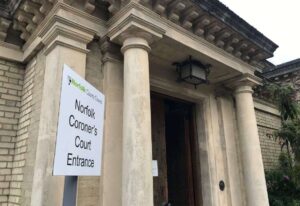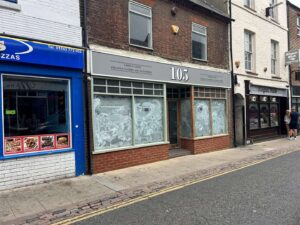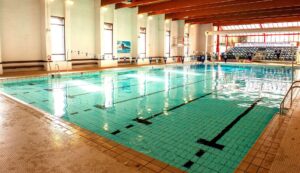We are such stuff as dreams are made on, Shakespeare once wrote in one of his defining plays, The Tempest.
And for one of the biggest regeneration projects in Lynn’s history, it is hoped the bard’s spectre looming over the Guildhall theatre will be the key to realising an aim of revitalising the riverfront.
The medieval complex, where the playwright is said to have once performed, is about to undergo a £30.5million revamp which aims to secure the future of Britain’s oldest working theatre.
Simon Ring, deputy leader of West Norfolk Council and one of the architects of the project, believes this “once in a lifetime” opportunity will put his hometown on the map.
The project has been thrust into the spotlight after numerous discoveries, including the original medieval stage and dressing room doorways, which may have once hosted Shakespeare.
But the scheme has also been marred by some uncertainty over funding, with the council recently agreeing to borrow £15.8million to cover the costs – a move critics fear could leave a “legacy of debt”.
However, Cllr Ring, who is infectiously optimistic about the project, has little doubt it will become a success.
“Whereas the Globe Theatre in London is a replica, the Guildhall is the only theatre still in existence that can legitimately claim Shakespeare performed here,” he said.
“But this project is not just about the theatre, it is about revitalising the whole of the riverfront. Run properly, the opportunity is immense.”
Cllr Ring sees the Guildhall as being the “launch pad” for visitors beginning their cultural and heritage journey in Lynn, which was once one of the most important towns in the country.
While the high costs of the scheme have proved controversial, he explained that the scope of the project has increased to include at least six revenue streams from the various facilities proposed.
This includes restoring the riverside restaurant back into use, a café and bar, art galleries, office space, creative hubs and a ‘Shakespeare experience in the Undercroft’.
“What has ballooned is what we want to deliver,” Mr Ring said, adding: “We will be getting every ounce out of the building – this is an example of sweating an asset.
“We get the marketing right, we are selling the whole of the riverfront. People will see it as a great place to live, attracting businesses and people to our town.”
During a behind-the-scenes tour of the revamp, Cllr Ring highlighted the plethora of opportunities within the complex and how the 600-year-old buildings will be repurposed.
He hopes visitors will want to stay all day at the venue, enjoying everything from history tours, theatre workshops, dining and finally watching a performance in the theatre itself.
It will be a hugely complex challenge and more archaeological discoveries may lie in wait.
Improving accessibility is also a key part of the scheme – and for the first time, wheelchair users will be able to visit the vast majority of the site.
The stage will also accommodate ‘performances in the round’ – a popular theatre setting during Shakespeare’s time, where the audience encircles the central stage.
Providing there are no major setbacks, it is hoped the regeneration project will be completed by 2028.
The race is also on to find funders for the project to avoid leaving the council saddled with debt – and officers are working hard to find possible donors.
For those doubting Shakespeare’s connections with the Guildhall, Cllr Ring gave an assured response.
“The historic evidence puts him here,” he said.
“For any doubters, what I would say is, show me evidence that proves he was not.”
HOW PLAGUE LED SHAKESPEARE TO NORFOLK
Shakespeare and his company of actors visited Lynn on tour in 1592-1593, when London’s theatres were closed because of an outbreak of plague.
A note in the corporation of Lynn’s account book shows Shakespeare’s company was paid by the corporation to perform there.
Robert Armin, one of the troupe’s leading actors, was born in Lynn.
It is also thought that a scene in Hamlet was inspired by a true event that occurred at the Guildhall.
A woman in the audience is said to have become so wracked by guilt during a performance that she publicly confessed to murdering her husband.
A passage in Act II of Hamlet references this: “I have heard, that guilty creatures sitting at a play, have by the very cunning of the scene been struck so to the soul, that presently, they have proclaimed their malefactions.”
In 1766, the pub next to the Guildhall – now called Shakespeare House – was named the Shakespeare Pub and had a picture of the bard on the front of it to reflect these links.






